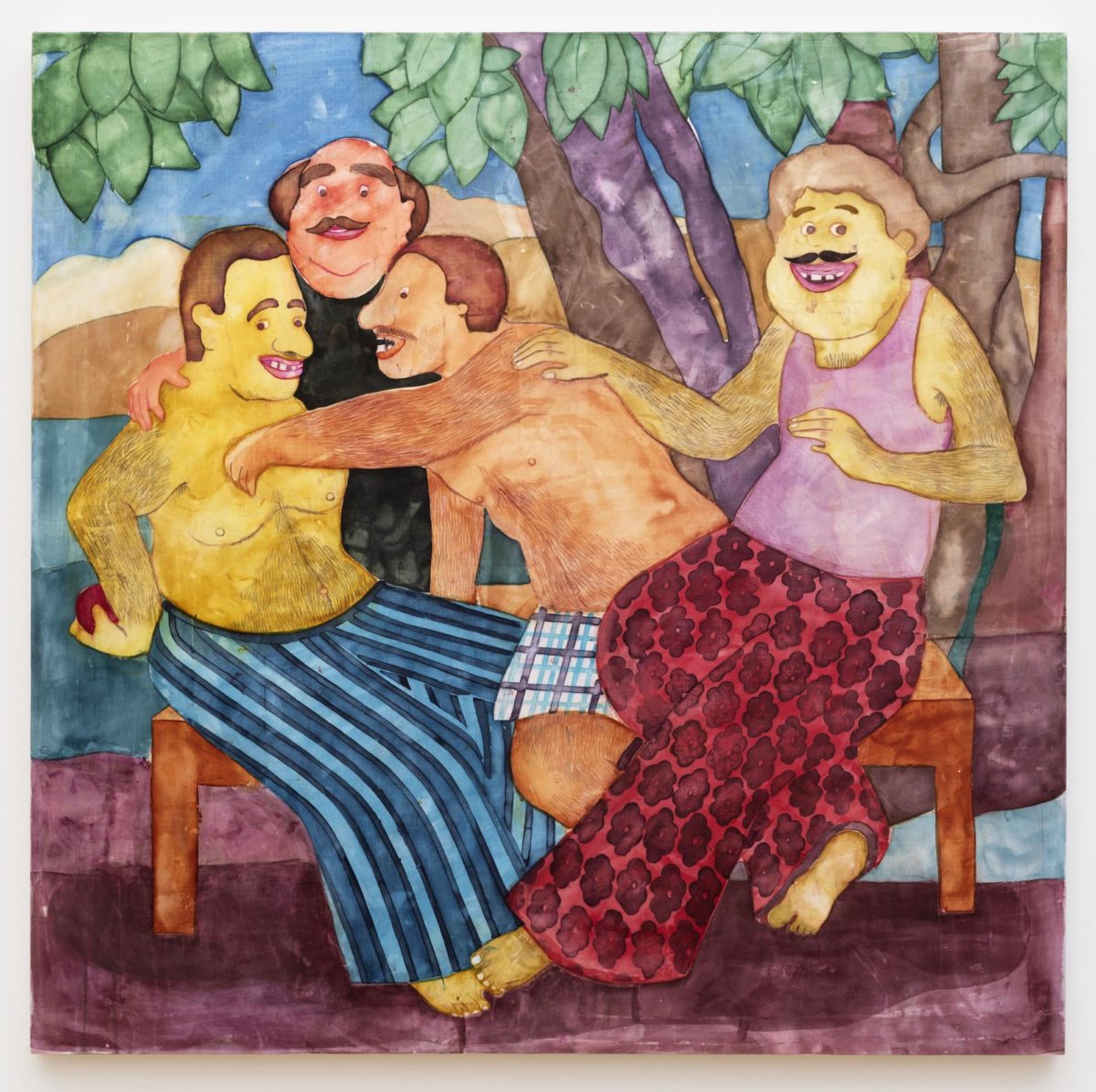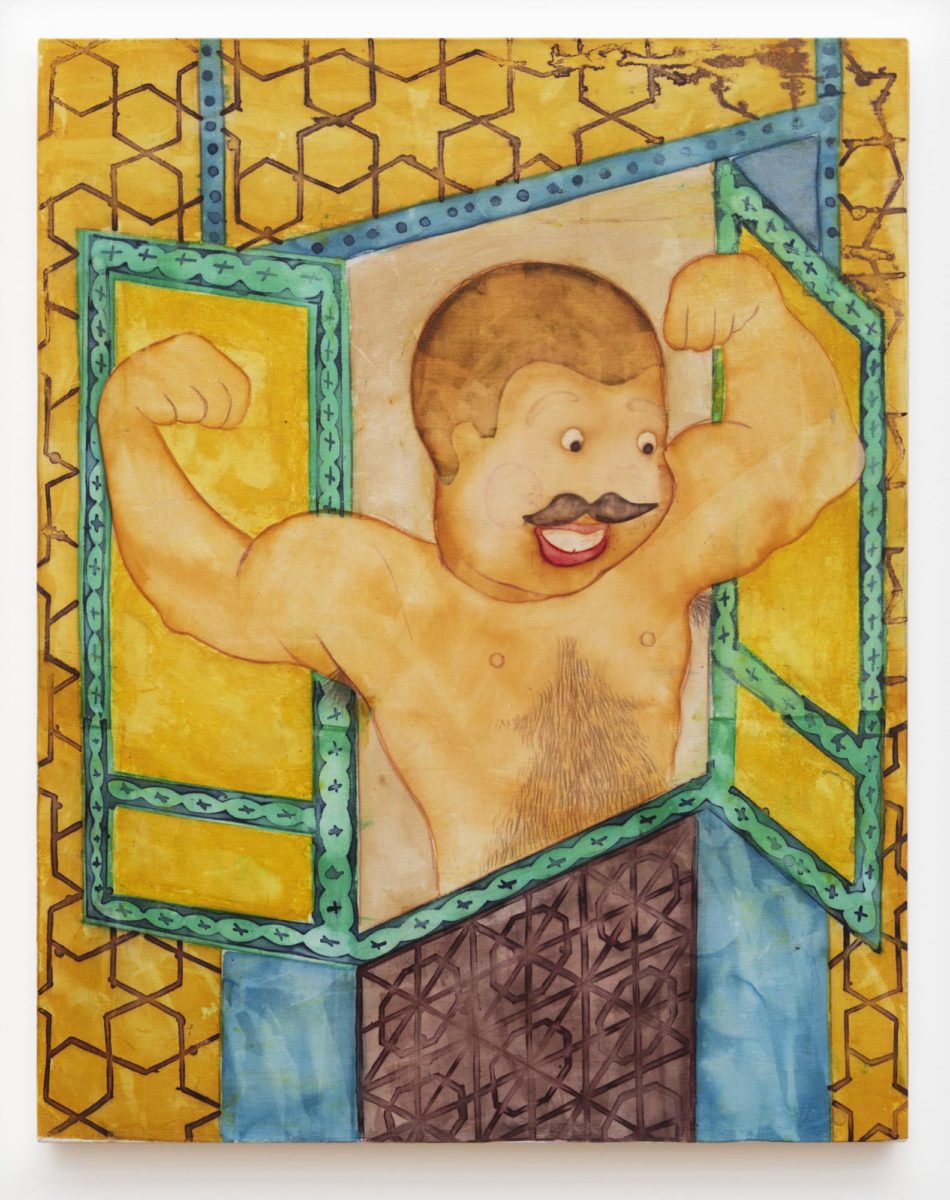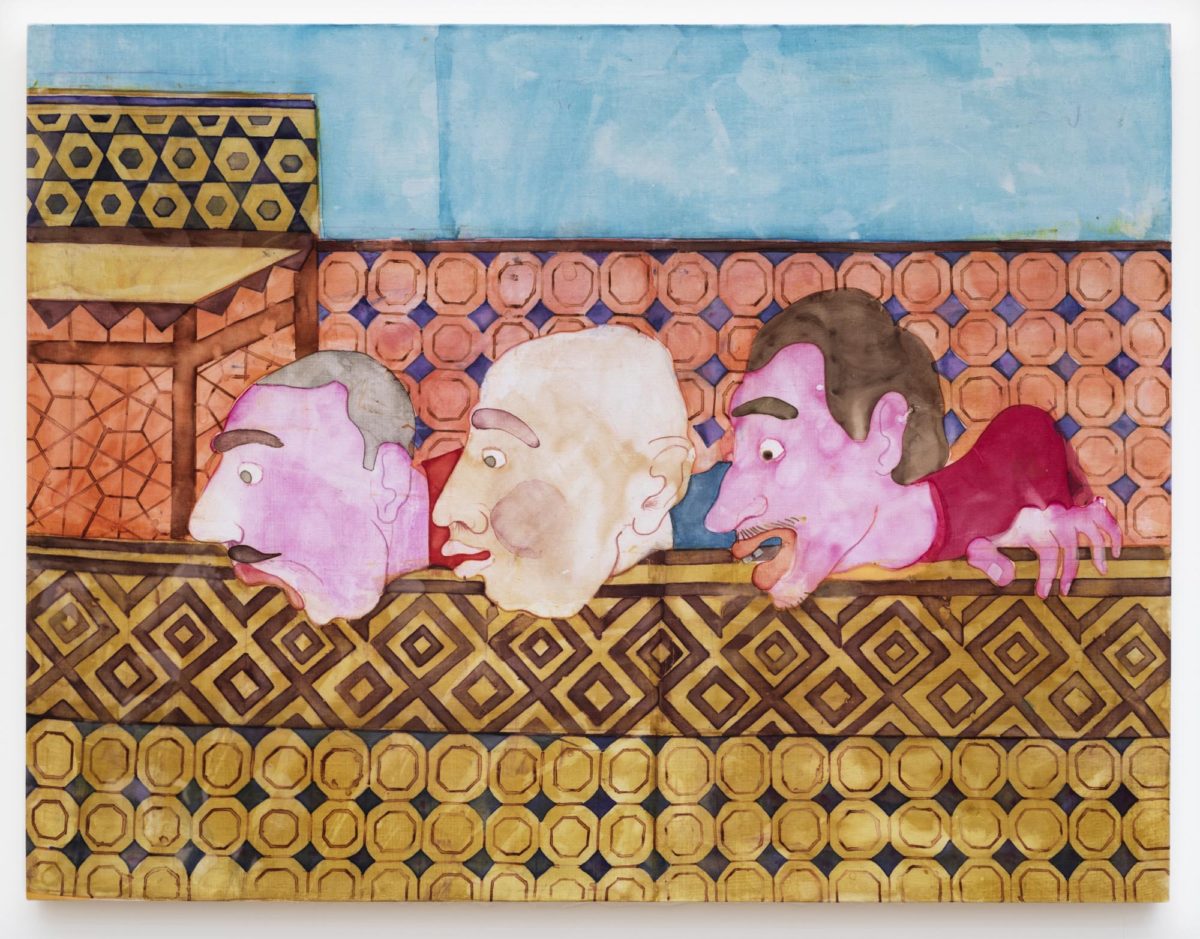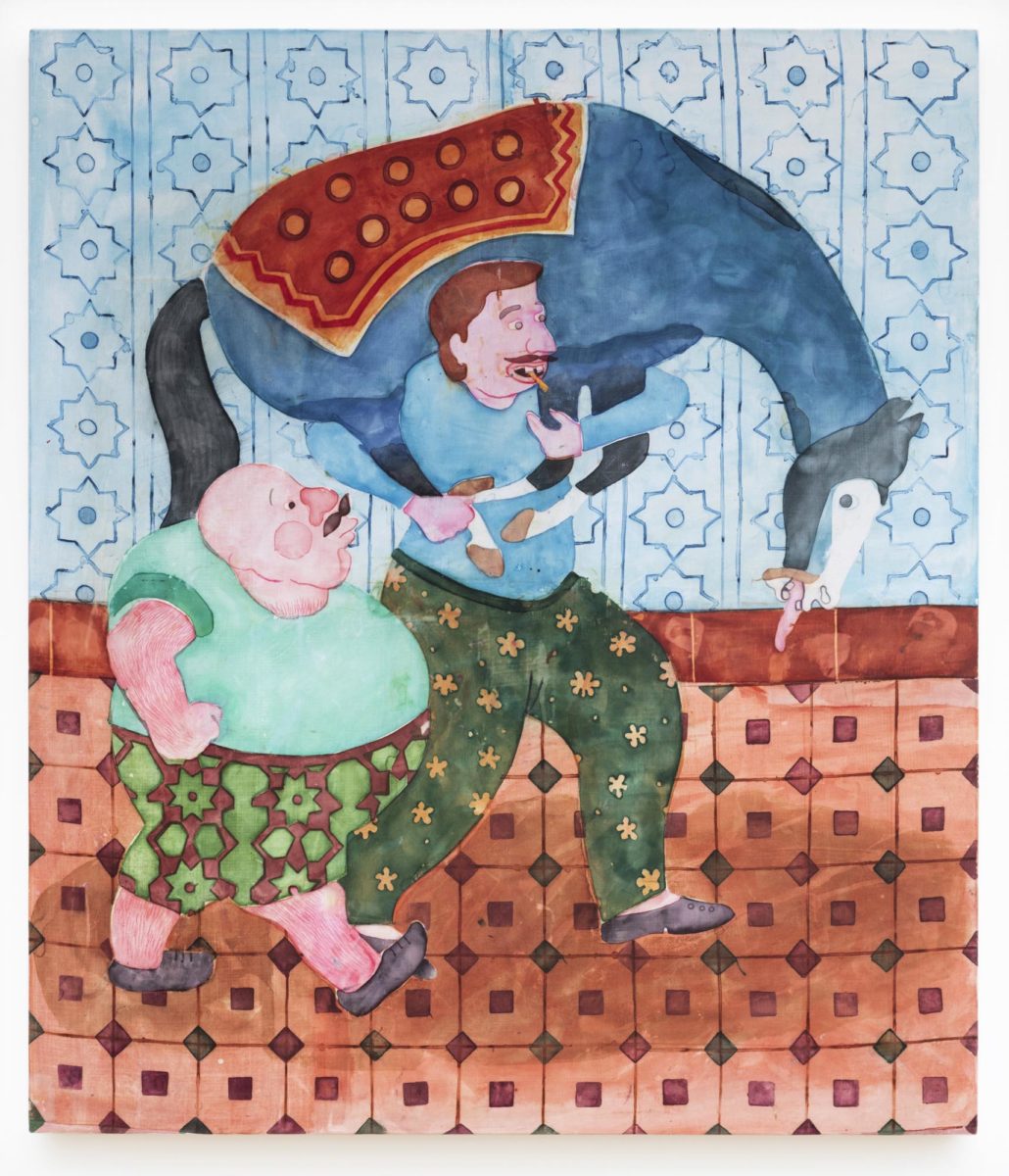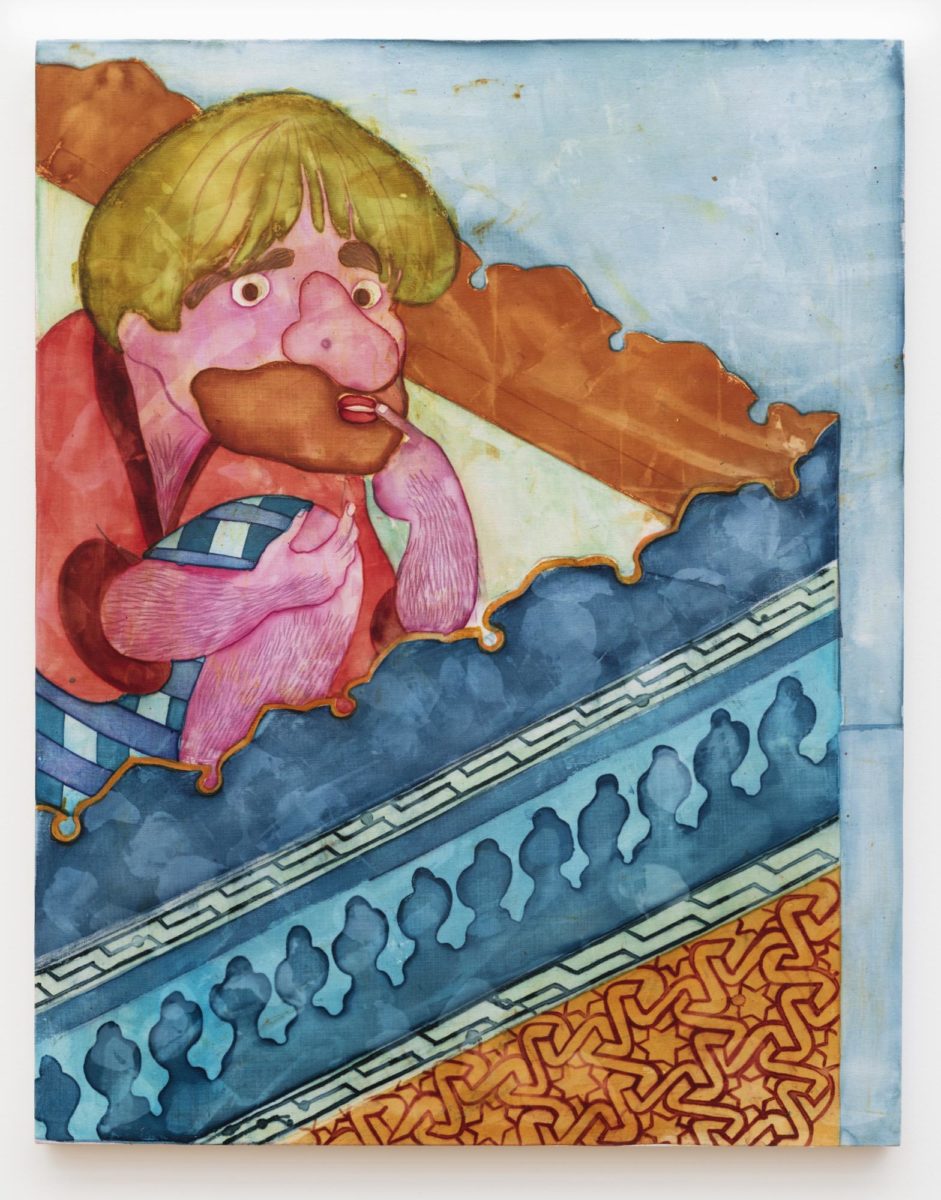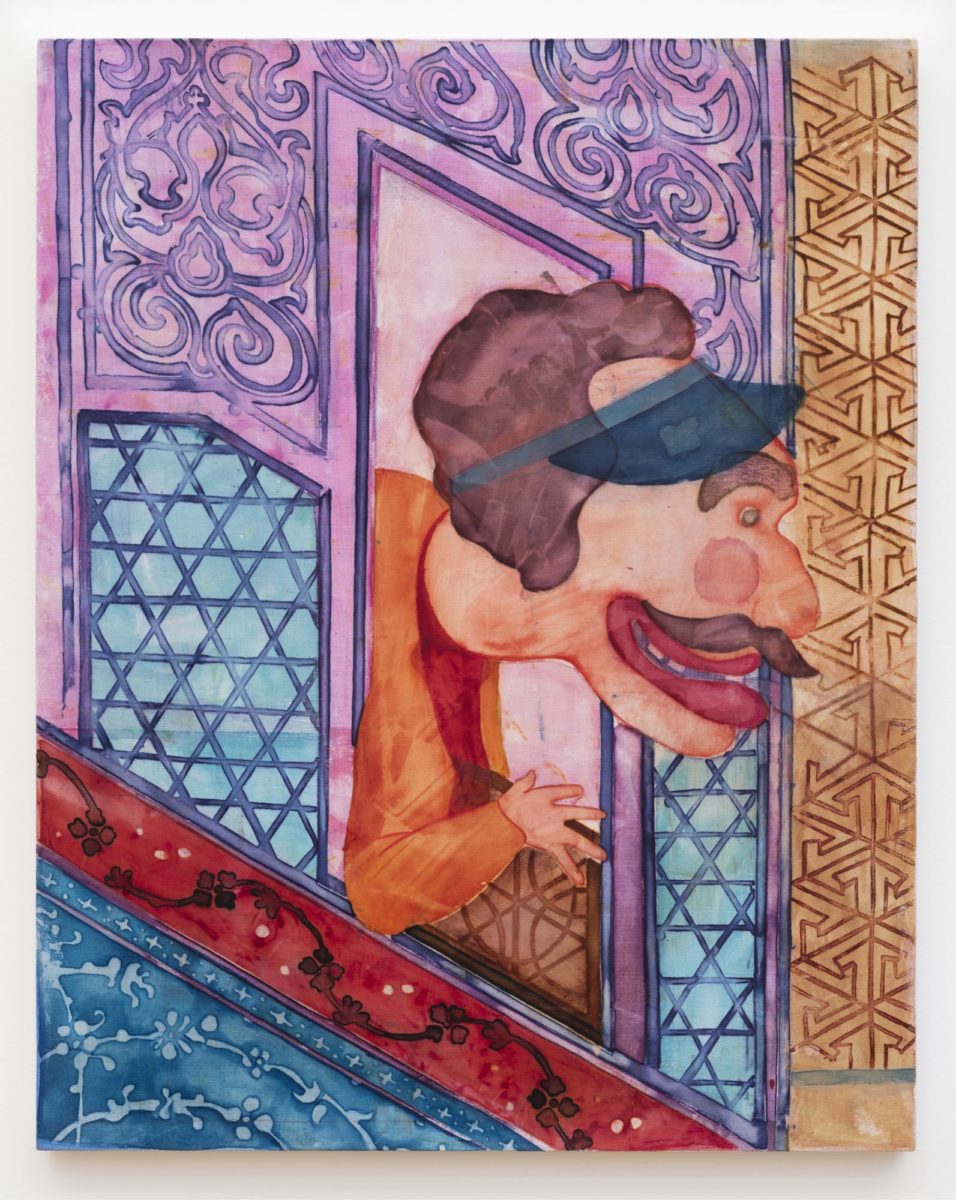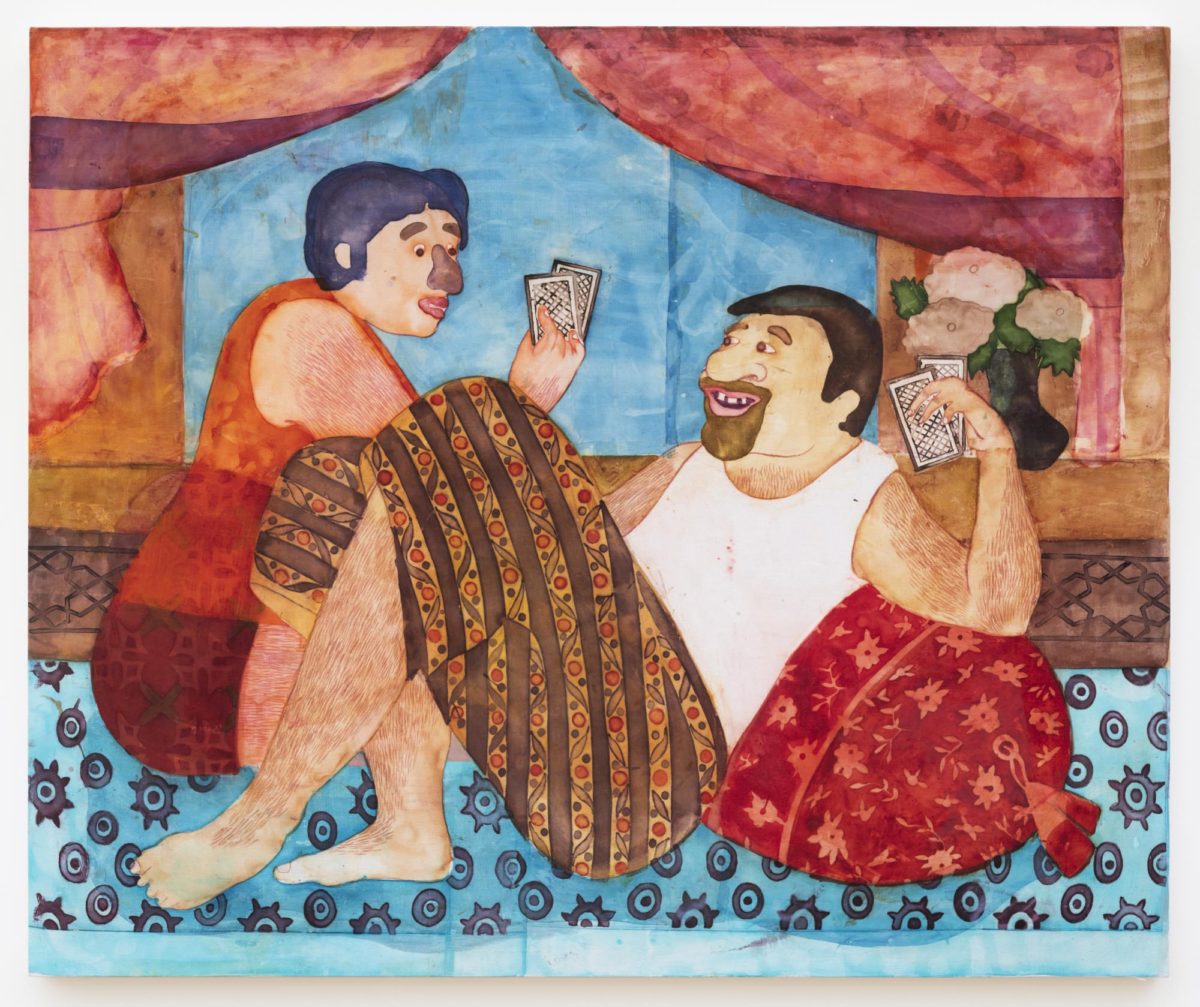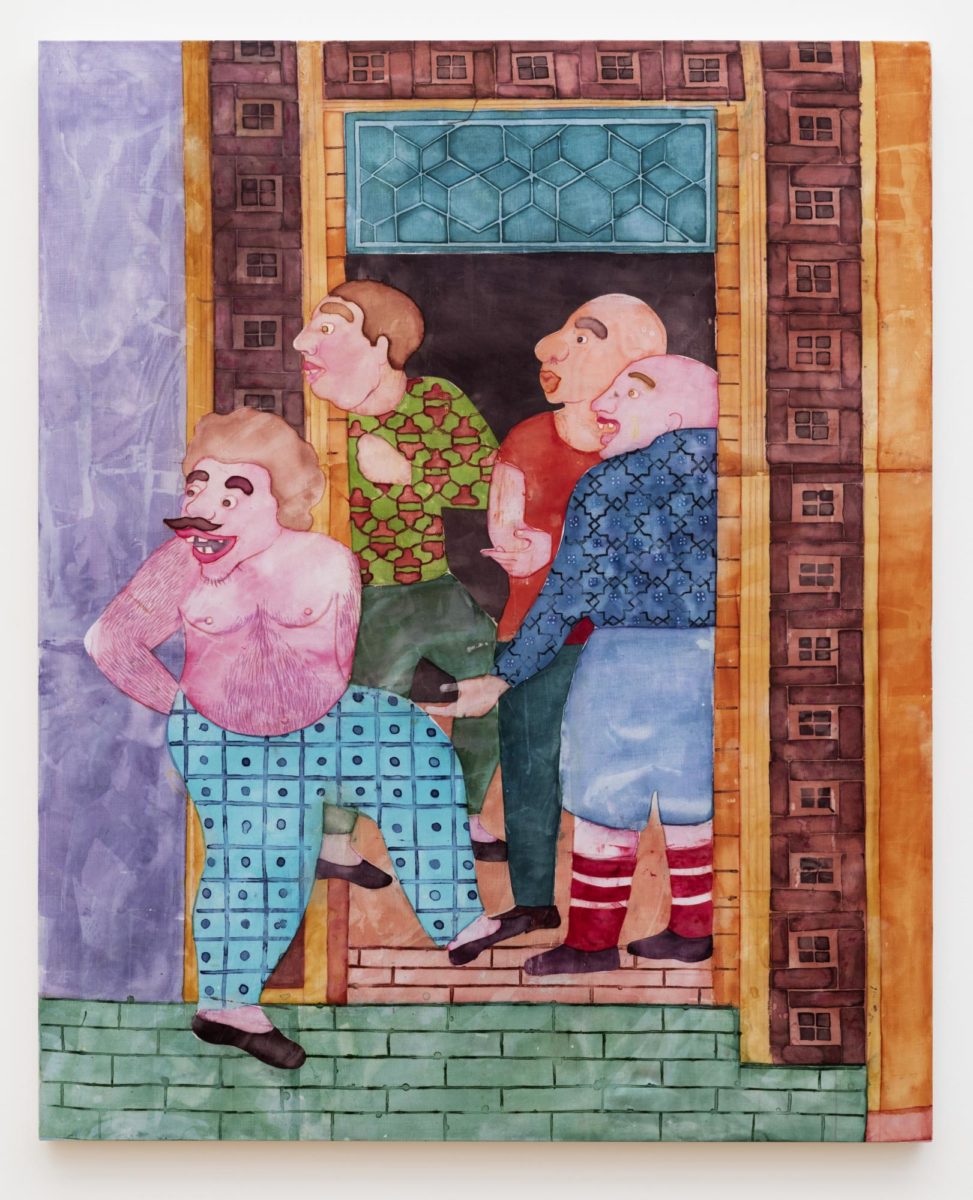
Orkideh Torabi doesn’t shy away from a bit of flab. The (primarily male) characters that appear in her hyper-saturated paintings let it all hang out, fleshy skin rendered in mottled pinks and browns, as they lounge or pose lazily for an unknown voyeur. Butt cracks and stomachs peep over tight sweatpants and swimwear, while gleeful faces grin with good humour. The evident joy of her characters extends to Torabi’s own outlook: her subjects appear at ease with themselves—a far cry from the toxic masculinity that thrives on insecurity.
Their cartoonish style is offset by her unusual painting technique, whereby fabric dye is infused to cotton fabric through an idiosyncratic transfer process that generates saturated surfaces. These are paintings with a batik or watercolour-like fluidity, where block colours shift and fade, and lines never remain quite straight. There is a playful wobble to these images. The Persian patterns that appear on walls and floors in the paintings—a nod to Torabi’s Iranian heritage—are notable for their precision despite this process. Rainbow tiles combine with striped and spotted vests and shorts, mingling old with new through the surfaces and garments that surround us.
“Block colours shift and fade, and lines never remain quite straight. There is a playful wobble to these images”
Torabi is based in Chicago, and it is not difficult to trace a thread of connection between her and the Chicago Imagists who rose to prominence in the 1960s and 70s, such as Gladys Nilsson and Christina Ramberg. The group were notable for their diverse influences, with everything from folk art to local architecture, comic books to fashion magazines, incorporated into their irreverent, highly prolific output. Torabi shares the satirical bite of the Imagists, using exaggeration and absurdity to push scenes towards the tipping point of ridicule, while always maintaining her balance.
